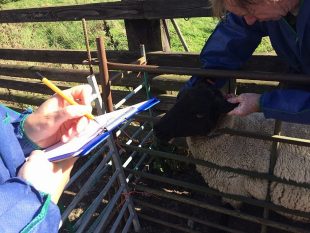
Following on from my last blog livestock information: working to keep the UK at the forefront of animal tracking I wanted to share some of our learning about our work on new livestock information services.
Our learning to get to this stage has been interesting and difficult, and has taken longer than many would have liked (after all, we just needed to build a more modern solution, right?). The span of our thinking has grown the more that we have learned and whilst this has been exciting, it has also been difficult for a team that has never worked together before and is geographically dispersed (Workington, Newcastle, Bristol, Southampton, Reading, London, Taunton, Kendal….). Also, we have needed to learn to adjust our thinking about the very nature of the programme. As I have previously said, the initial driver for this programme was to reduce the cost of ICT by building new, flexible solutions using common platforms. As a result, we’ve had lots of great people lined up to start to build the future solution in an iterative and customer focussed way in line with GDS (Government Digital Service) guidelines. Managing this passion and enthusiasm to get on and deliver in line with the very real need to save money whilst standing back and considering all of the options has been difficult. In reality, moving to implementation more quickly than we have would probably have led to solutions that do not fully realise the opportunity available to us, but we would never have known that.
Most interestingly for me, the reality of genuinely thinking differently is more difficult than perhaps I imagined. Let me give you an example. In the world of cattle identification and tracking, each animal has paper passport containing information including ID number, dam, sire, date of birth, holdings of ownership and so on. This passport gives farmers a license to trade. Without a passport, that animal cannot enter the food chain. Farmers hated passports when they were introduced, but are precious about them now because they are the gateway to a buyer. Our thinking early on identified the opportunity to move to electronic passports, the benefits of which are obvious in the digital world that we now live in. However, more recently, we’ve come to the realisation that if we had real time data and electronic identification tags, you simply wouldn’t need a passport at all. Maybe I was being slow, but it was only a trip to Belfast recently where the Northern Irish government told us that they had never had passports because their controls exceeded that which a passport could generate - this thinking has led us to a place where we can remove a huge piece of process that is expensive for us and for the outside world, yet actually have a better set of controls in place. What’s not to like?
My own learning from this programme so far has been that taking the time to really listen, to genuinely put yourself in others’ shoes, to rigorously challenge your own thinking and that of others can really pay off. The same is true when thinking about solutions. Understanding strategies, principles, the marketplace and assessing all of that against user and outcome requirements is critical and can present different and better solutions. All of this takes time, especially when you need to bring lots of people together to own the thinking and the future vision (and at the end of the day, all of this is really about people, not just going through a logical process). But doing this really well is worth it, because the solutions and confidence in delivery that it can build will lead to better solutions that are positioned to deliver greater benefits, probably for less cost.

Recent Comments